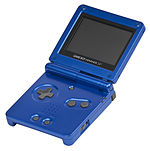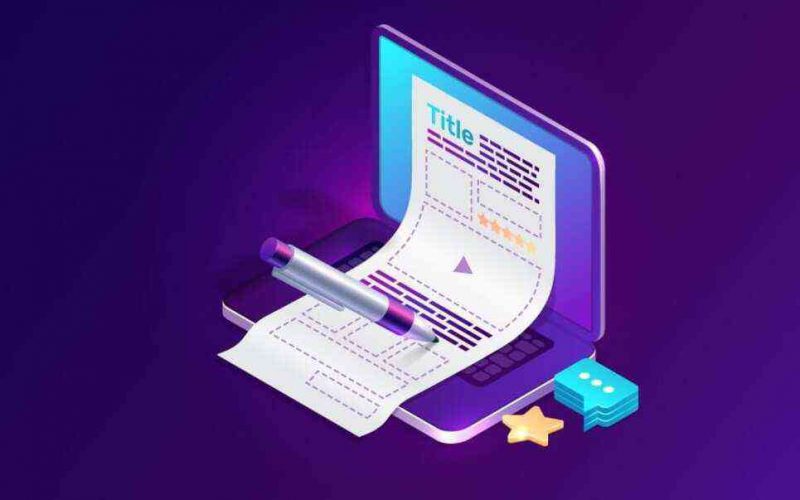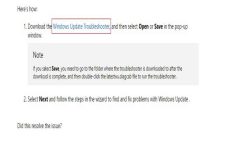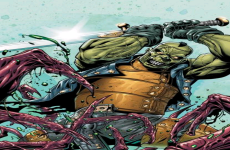” GBA ” redirects here. For other uses, see GBA ( disambiguation )
The Game Boy Advance[a] (GBA) is a 32-bit handheld game console developed, manufactured and marketed by Nintendo as the successor to the Game Boy Color. It was released in Japan on March 21, 2001, in North America on June 11, 2001, in the PAL region on June 22, 2001, and in mainland China as iQue Game Boy Advance on June 8, 2004. The GBA is part of the sixth generation of video game consoles. The original model does not have an illuminated screen; Nintendo addressed that with the release of a redesigned model with a frontlit screen, the Game Boy Advance SP, in 2003. A newer revision of the redesign was released in 2005, with a backlit screen. Around the same time, the final redesign, the Game Boy Micro, was released in September 2005.
Bạn đang đọc: Game Boy Advance
As of June 2010, 81.51 million units of the Game Boy Advance series have been sold worldwide. [ 6 ] Its successor, the Nintendo DS, was released in November 2004 [ 10 ] and is backward compatible with Game Boy Advance software .
Mục lục
History[edit]
Contrary to the previous Game Boy models, which have the ” portrait ” form factor of the original Game Boy ( designed by Gunpei Yokoi ), the Game Boy Advance was designed in a ” landscape ” form factor, putting the buttons to the sides of the device instead of below the màn hình hiển thị. The Game Boy Advance was designed by the French designer Gwénaël Nicolas and his Tokyo-based design studio Curiosity Inc. [ 11 ] [ 12 ]
News of a successor to the Game Boy Color (GB/GBC) first emerged at the Nintendo Space World trade show in late August 1999, where it was reported that two new handheld systems were in development. An improved version of the GBC with wireless online connectivity was codenamed the Advanced Game Boy (AGB), and a brand-new 32-bit system was not set for release until the following year.[13] On September 1, 1999, Nintendo officially announced the Game Boy Advance, revealing details about the system’s specifications including online connectivity through a cellular device and an improved model of the Game Boy Camera. Nintendo teased that the handheld would first be released in Japan in August 2000, with the North American and European launch dates slated for the end of the same year.[14] Simultaneously, Nintendo announced a partnership with Konami to form Mobile 21, a development studio that would focus on creating technology for the GBA to interact with the GameCube, Nintendo’s home console which was also in development at the time under the name “Dolphin”.[15] On August 21, 2000, IGN showed off images of a GBA development kit running a demonstrational port of Yoshi Story,[16] and on August 22, pre-production images of the GBA were revealed in an issue of Famitsu magazine in Japan.[17] On August 24, Nintendo officially revealed the console to the public in a presentation, revealing the Japanese and North American launch dates, in addition to revealing that 10 games would be available as launch games for the system.[18] The GBA was then featured at Nintendo Space World 2000 from August 24 to 26[19] alongside several peripherals for the system, including the GBA Link cable, the GameCube – Game Boy Advance link cable,[20] a rechargeable battery pack for the system, and an infrared communications adaptor which would allow systems to exchange data.[21] In March 2001, Nintendo revealed details about the system’s North American launch, including the suggested price of $99.99 and the 15 launch games. Nintendo estimated that around 60 games would be made available for the system by the end of 2001.[22][23]
Project Atlantis[edit]
In 1996, magazines including Electronic Gaming Monthly,[24] Next Generation,[25] issues 53 and 54 of Total!,[citation needed] and the July 1996 issue of Game Informer[citation needed] featured reports of a successor to the original Game Boy, codenamed Project Atlantis. Although Nintendo’s expectations of releasing the system in at least one territory by the end of 1996[24][25] would make that machine seem to be the Game Boy Color, it was described as having a 32-bit ARM processor,[24][26] a 3-by-2-inch (7.6 cm x 5 cm) color screen,[24][25] and a link port[24] — a description that more closely matches the Game Boy Advance. Electronic Gaming Monthly reported the processor to be an ARM710, clocked at 25 MHz,[24] while Next Generation claimed it to be a StrongARM SA-110, possibly supporting 160 MHz.[26] Both were designed by Advanced RISC Machines (ARM), which also created the CPU for the Game Boy Advance (and all Nintendo handhelds until the Nintendo Switch). In terms of software, it was announced that Nintendo of Japan was working on a game for the system called Mario’s Castle, ultimately unreleased.[24] Nintendo suspended the Atlantis project sometime in 1997, since the original Game Boy’s 80% of the handheld market share was considered too high to merit the release of a successor.[27]
During a panel discussion at 2009’s Game Developers Conference, a cancelled “Game Boy Advance predecessor” was shown on-screen, which looked like a bulky Game Boy Color. While not named, Joystiq concluded this device was most likely Project Atlantis.[28]
Hardware[edit]
Technical specifications[edit]
The technical specifications [ 29 ] [ 30 ] [ 31 ] of the original Game Boy Advance are, as provided by Nintendo : [ 32 ]
Size
Approximately 145 mm (5.7 in) x 82 mm (3.2 in) x 24 mm (0.94 in) (WxHxD)
Weight
Approximately 140 g (4.9 oz)
Screen
2.9 inch reflective thin-film transistor (TFT) color liquid-crystal display (LCD)
Display size
40.8 mm (1.61 in) by 61.2 mm (2.41 in)
Framerate
59.727500569606 Hz[33]
Power
2× AA batteries[34]
Battery life
Approximately 15 hours on average while playing Game Boy Advance games (varies depending on the Game Pak being played, volume setting and any external peripherals being used such as a screen light[35])
CPU
16.8 MHz 32-bit ARM7TDMI with embedded memory; 8.388 or 4.194 MHz Sharp LR35902 (8080-derived) for Game Boy and Game Boy Color backward compatibility
Memory
32 kilobyte + 96 kilobyte VRAM (internal to CPU); 256 kilobyte DRAM (external to CPU)
Resolution
240 × 160 pixels (3:2 aspect ratio)
Color support
15-bit RGB (5 bits depth per channel), capable of displaying 512 simultaneous colors in “character mode” and 32,768 (215) simultaneous colors in “bitmap mode”
Sound
Dual 8-bit DAC for stereo sound (called Direct Sound), plus all legacy channels from Game Boy. The DACs can be used to play back streams of wave data, or used to output multiple wave samples processed or mixed in software by the CPU, facilitated by AMP IR3R60N
Input
- Eight-way control pad
- Six action buttons (A, B, L, R, Start, Select)
- Volume slider
- Power switch
- Serial I/O (“Link cable”)
- Cartridge I/O
Backward compatibility for trò chơi Boy and trò chơi Boy Color games is provided by a custom 4.194 / 8.388 MHz 8080 – based coprocessor ( Game Boy Advance software can use the audio tone generators to supplement the primary sound system ), while a link port at the top of the unit allows it to be connected to other devices using a trò chơi Link cable or GameCube link cable. [ 20 ] When playing Game Boy or Game Boy Color games on the Game Boy Advance, the L and R buttons can be used to toggle between a stretched widescreen format ( 240 × 144 ) and the original màn hình hiển thị ratio of the Game Boy ( 160 × 144 ). trò chơi Boy games can be played using the same selectable color palettes as on the Game Boy Color. Every Nintendo handheld system following the release of the Game Boy Advance SP has included a built-in light and rechargeable battery .
The Game Boy Advance 2D graphics hardware has scaling and rotation for traditional tiled backgrounds in its modes 1 and 2 and scaling and rotation for bitmaps in modes 3 through 5 (used less often on the GBA because of technical limitations).[36] On each machine supporting this effect, it is possible to change the scaling and rotation values during the horizontal blanking period of each scanline[clarification needed] to draw a flat plane in a perspective projection. More complex effects such as fuzz are possible by using other equations for the position, scaling, and rotation of each line. The “character mode” supports up to 4 tile map background layers per frame, with each tile being 8×8 pixels in size and having 16 or 256 colors. The “character mode” also supports up to 128 hardware sprites per frame, with any sprite size from 8×8 to 64×64 pixels and with 16 or 256 colors per sprite.[36]
Color variants[edit]
The Game Boy Advance has been available in numerous colors and limited editions throughout its production. It was initially available in Arctic, Black, Orange, Fuchsia (translucent pink), Glacier (translucent blue/purple), and Indigo. Later in the system’s availability, additional colors and special editions were released, including: Red, Clear Orange/Black, Platinum, White, Gold, Hello Kitty edition (pink with Hello Kitty and logo on bezel), The King of Fighters edition (black with images on bezel and buttons), Chobits edition (translucent light blue, with images on bezel and buttons), Battle Network Rockman EXE 2 (light blue with images on bezel), Mario Bros. edition (Glacier with Mario and Luigi on bezel), and Yomiuri Giants edition (Glacier with images on bezel).
A number of Pokémon-themed limited-edition systems were made available in Pokémon Center stores in Japan. These editions include: Gold Pokémon edition (Gold with Pikachu and Pichu on bezel), Suicune edition (blue/grey with greyscale Pikachu and Pichu on bezel, and a Pokémon Center sticker on the back), Celebi edition (olive green with Celebi images on bezel), and Latias/Latios edition (pink/red and purple, with images of Latias and Latios on bezel).
Games[edit]
With hardware performance comparable to the Super Nintendo Entertainment System, the Game Boy Advance represents progress for sprite-based technology. The system’s library includes platformers, SNES-like role-playing video games, and games ported from various 8-bit and 16-bit systems of the previous generations. This includes the Super Mario Advance series, as well as the system’s backward compatibility with all earlier Game Boy titles. While most GBA games employ 2D graphics, developers have ambitiously designed some 3D GBA games that push the limits of the hardware, including first-person shooters like a port of Doom, racing games like V-Rally 3, and even platformers, like Asterix & Obelix XXL.
In Japan, the final game to have been released on the system is Final Fantasy VI Advance on November 30, 2006, which is also the final game published by Nintendo on the system.[37] In North America, the last game for the system is Samurai Deeper Kyo, released on February 12, 2008. Lastly, in Europe, 2 Games in 1: Columns Crown & ChuChu Rocket! is the last game for the system (and also the last one released on the system overall), released on November 28, 2008. The Japan-only Rhythm Tengoku, the first game in what would eventually become known outside Japan as the Rhythm Heaven/Rhythm Paradise series, is the final first-party-developed game for the system, released on August 3, 2006.
Compatibility with other systems[edit]
An accessory for the GameCube, known as the Game Boy Player, was released in 2003 as the successor to the Super Game Boy peripheral for the Super Nintendo Entertainment System. The accessory allows Game Boy Advance games, as well as Game Boy and Game Boy Color games, to be played on the GameCube. However, some games may have compatibility issues due to certain features requiring extra hardware. For example, games with built-in motion sensors (such as Yoshi’s Topsy-Turvy) would require players to manipulate the console itself.
The GBA is the last of the three Nintendo handheld systems to bear the Game Boy name, games developed for it are incompatible with older Game Boy systems, and each game’s box carries a label indicating that the game is ” not compatible with other Game Boy systems “. However, games designed for older Game Boy systems are conversely compatible with the Game Boy Advance, with options to play such games on either their standard aspect ratios or a stretched fullscreen .trò chơi Boy Advance games are compatible with Nintendo DS models that tư vấn them with a dedicated GBA cartridge slot beneath the touch màn hình hiển thị, ( specifically the original Mã Sản Phẩm and the Nintendo DS Lite ), although they do not tư vấn multiplayer or features involving the use of GBA accessories because they do not have the GBA’s external peripheral port that these features require to function. The Nintendo DSi and Nintendo DSi XL do not have backward compatibility with the GBA and a few DS games that use the GBA slot .
Virtual Console[edit]
As part of an Ambassador Program for early adopters of the Nintendo 3DS system, ten Game Boy Advance games, along with ten Nintendo Entertainment System games, were made available free for players who bought a system before the price drop on August 12, 2011.[38] Unlike the other Virtual Console games for the system, features such as the Home menu or save states are missing, since the games are running natively instead of in emulation. 3DS systems that have custom firmware installed can also install the ten available games available to Ambassador Program members. Many other Game Boy Advance games can also be played via custom firmware by injecting a different game into one of the released Game Boy Advance games.[citation needed] Satoru Iwata stated Game Boy Advance games will be available on the Wii U’s Virtual Console sometime during April 2014.[39] On April 3, 2014, the first of the announced GBA games, Advance Wars, Metroid Fusion, and Mario & Luigi: Superstar Saga, were released for the Wii U’s Virtual Console.[40] A Virtual Console library of Game Boy Advance games was launched for the Wii U console. Similar to the original DS and DS Lite, all of the Virtual Console releases are single-player only, as they do not emulate multiplayer features enabled by Game Link cables.
Accessories[edit]
Official[edit]
 Pokémon FireRed and LeafGreen
Pokémon FireRed and LeafGreen
The Wireless Adapter was packed in withand
Nintendo released various addons for the Game Boy Advance, which include :
Unofficial[edit]
Other accessories for the Game Boy Advance include :
- Afterburner: The Afterburner is an internal front-lighting system manufactured by Triton Labs and released in mid-2002.[44] The installation consists of disassembling the system, removing some plastic from the interior of the case, attaching the lighting mechanism to the screen, and soldering two wires to the motherboard for power. Optionally, a potentiometer or an integrated circuit could be added to allow adjusting the brightness of the light. When the initial version of the Game Boy Advance SP was released, it included a very similar integrated lighting system. This was replaced in the subsequent version of the Game Boy Advance SP with a backlit display. According to Triton Labs, the Afterburner achieved considerable success during the lifespan of the GBA, with many gamers buying it though the kit voids the system’s warranty, and the company had minor trouble keeping up with demand for the accessory during the 2002 holiday season.[44]
- Worm Cam: This device by Nyko attaches to the top of the Game Boy Advance and connects to the link port of the GBA. This device functions as a digital camera which allows digital pictures to be taken. The snapshots can then be uploaded to a PC with the USB cable and software provided. This camera’s strange shape prevents it from being used with the GBA SP.[45][46]
- Glucoboy: This is a blood glucose monitor with built-in games released in Australia in 2007 for children with diabetes.[47]
Revisions[edit]
trò chơi Boy Advance SP[edit]
 trò chơi Boy Advance SP
trò chơi Boy Advance SP
In early 2003, Nintendo introduced a new form-factor for the handheld, known as the Game Boy Advance SP (model AGS-001). The redesigned unit resembles a pocket-size laptop computer, including a folding case approximately one-half the size of the original unit. It also supports a rechargeable lithium-ion battery, a significantly brighter LCD screen, and an internal front-light that can be toggled on and off. The redesign was intended to address some common complaints about the original Game Boy Advance, which had been criticized for being somewhat uncomfortable to use, especially due to an overly dark screen.[citation needed]
Backlight Mã Sản Phẩm ( AGS-101 )[edit]
 trò chơi Boy Advance SP ( model AGS-101 )Around the same time as the release of the trò chơi Boy Micro, Nintendo released a new backlit version of the SP ( model AGS-101 ). The switch that controls the light now toggles between ” normal ” ( which itself is already brighter than the original Game Boy Advance SP’s screen ), and ” bright “, an intense brightness level similar to an LCD television .
trò chơi Boy Advance SP ( model AGS-101 )Around the same time as the release of the trò chơi Boy Micro, Nintendo released a new backlit version of the SP ( model AGS-101 ). The switch that controls the light now toggles between ” normal ” ( which itself is already brighter than the original Game Boy Advance SP’s screen ), and ” bright “, an intense brightness level similar to an LCD television .
trò chơi Boy Micro[edit]
 trò chơi Boy MicroIn September 2005, Nintendo released a second redesign of the Game Boy Advance. This model, dubbed the Game Boy Micro, is similar in style to the original Game Boy Advance’s horizontal orientation, but is much smaller and sleeker. The Game Boy Micro also allows the user to switch between several colored faceplates to allow customization, a feature which Nintendo advertised heavily around the Game Boy Micro’s launch. Nintendo also hoped that this ” fashion ” feature would help target audiences outside of typical video game players. Unlike the previous Game Boy Advance models, the Game Boy Micro is unable to tư vấn trò chơi Boy and trò chơi Boy Color titles. The Game Boy Micro did not make much of an impact in the video game market as it was overshadowed by Nintendo’s other portable, the Nintendo DS, which also played Game Boy Advance cartridges. [ 48 ]
trò chơi Boy MicroIn September 2005, Nintendo released a second redesign of the Game Boy Advance. This model, dubbed the Game Boy Micro, is similar in style to the original Game Boy Advance’s horizontal orientation, but is much smaller and sleeker. The Game Boy Micro also allows the user to switch between several colored faceplates to allow customization, a feature which Nintendo advertised heavily around the Game Boy Micro’s launch. Nintendo also hoped that this ” fashion ” feature would help target audiences outside of typical video game players. Unlike the previous Game Boy Advance models, the Game Boy Micro is unable to tư vấn trò chơi Boy and trò chơi Boy Color titles. The Game Boy Micro did not make much of an impact in the video game market as it was overshadowed by Nintendo’s other portable, the Nintendo DS, which also played Game Boy Advance cartridges. [ 48 ]
Reception[edit]
Upon its North American release, IGN praised the Game Boy Advance’s graphical capabilities and battery life, but criticized the system’s shoulder button placement and noted the system’s high price tag which ” may be a tad bit too high to swallow, ” ultimately scoring the system with an ” 8.0 ” out of 10. They also pointed out the system’s lack of a backlight which occasionally got in the way of playing games. [ 49 ] ABC News praised the Game Boy Advance’s graphics, grip and larger màn hình hiển thị, stating that ” You’ve never had as much fun playing old games. ” [ 50 ]Reviewing for CNET, Darren Gladstone scored the system with a 7.0 out of 10, praising its graphical performance and backwards compatibility, but being considerably critical of the system’s lack of a backlit màn hình hiển thị, noting that it makes it ” nearly impossible ” to play in normal lighting conditions. Gladstone ultimately suggested the sleeker and backlit trò chơi Boy Advance SP over the system despite noting that its cheaper price may ” appeal to gamers on a lower budget. ” [ 51 ] Despite ending tư vấn in 2010, many games mostly ROM hacks, fan games and Homebrew games are still being developed by communities for the GBA .
Sales[edit]
Nintendo hoped to sell 1.1 million Game Boy Advance units by the end of March with the system’s Japanese debut, and anticipated sales of 24 million units before the end of 2001 ; many marketing analysts believed for this to be a realistic goal due to the company’s lack of major competition in the handheld video game market. [ 52 ] Within the first week of its North American launch in June, the Game Boy Advance sold 500,000 units, making it the fastest-selling video game console in the United States at the time. In response to strong sales, Nintendo ordered 100,000 units to ship to retail stores, hoping to ship another half million of them by the end of June. [ 53 ] The Game Boy Advance also became the fastest-selling system in the United Kingdom, selling 81,000 units in its first week of release and beating the PlayStation 2 ‘ s previous record of 20,000 units. [ 54 ] In 2004, the system’s sales in the United Kingdom surpassed one million units. [ 55 ]On December 1, 2006, Nintendo of America released launch-to-date information indicating that the company had sold 33.6 million units of the trò chơi Boy Advance series in the United States. [ 56 ] In a Kotaku article published on January 18, 2008, Nintendo revealed that the Game Boy Advance series had sold 36.2 million units in the United States, as of January 1, 2008. [ 57 ] As of December 31, 2009, the Game Boy Advance series has sold 81.51 million units worldwide, 43.57 million of which are trò chơi Boy Advance SP units and 2.42 million of which are trò chơi Boy Micro units. [ 58 ]After the Game Boy Advance’s tư vấn lessened, the most popular software became mostly games oriented to younger gamers. [ 59 ]
See also[edit]
Notes[edit]
- ^Japanese: ゲームボーイアドバンス, Hepburn: Gēmu Bōi Adobansu
References[edit]
Source: https://expgg.vn
Category: Thông tin








